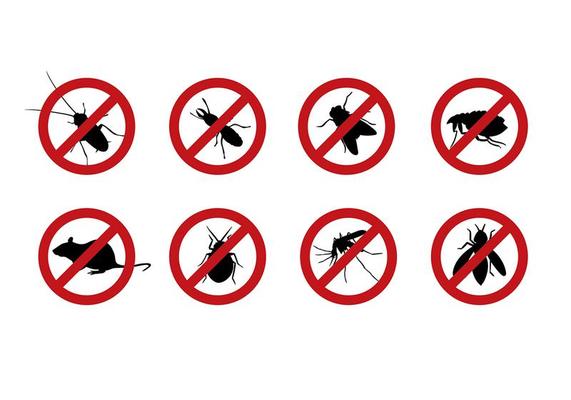Checking Out Invasion and Treatment Techniques in the Globe of Bug Control
The landscape of bug control incorporates a myriad of difficulties, specifically as invasions of usual house bugs continue to develop. Understanding the behaviors and reproductive patterns of these hassles is important for establishing reliable treatment strategies. By integrating preventive steps with innovative management strategies, such as Integrated Pest Monitoring (IPM), property owners can better safeguard their settings. The performance of these techniques may differ substantially based on specific scenarios. What hidden elements add to the success or failure of these approaches in different setups?

Common Home Pests
When it involves handling our home, understanding typical household bugs is essential. These insects not just disrupt our convenience yet can also position health and wellness risks and damages residential property. One of the most widespread family parasites consist of ants, cockroaches, rats, termites, and bed insects.
Ants, often seen foraging in cooking areas, can pollute food and establish huge nests. Rats, consisting of mice and rats, can create structural damages and carry conditions like hantavirus and salmonella.
Identifying the signs of these parasites, such as droppings, nests, or attack marks, is essential for very early intervention (Pest Control Lockhart). Proper sanitation practices, securing entry factors, and maintaining a clutter-free setting are efficient preventative measures. By identifying these common household insects and comprehending their actions, home owners can take proactive steps to minimize infestations, making certain a much healthier living environment
Comprehending Insect Infestations
Insect problems can intensify rapidly, transforming a small annoyance into a considerable issue if not dealt with promptly. Typical aspects adding to infestations include poor hygiene, structural susceptabilities, and seasonal changes that drive bugs indoors.
Recognizing the kind of pest is crucial, as different types display different habits and reproductive prices. As an example, rodents might develop nests in hidden locations while bugs like cockroaches prosper in moist atmospheres. Early discovery frequently depends upon identifying signs such as droppings, munch marks, or unusual sounds, which can suggest an issue prior to it becomes severe.
Ecological conditions also play an essential role in bug spreading. Cozy, damp environments can promote the fast development of bug populaces, while modifications in landscape design or construction can unintentionally create favorable environments. As a result, normal evaluations and preventative actions are extremely important to mitigating the risk of problems. An educated method to recognizing these dynamics prepares for reliable bug monitoring approaches in the future.
Treatment Approaches and Methods
Effective treatment approaches and techniques are necessary for mitigating pest infestations and recovering a secure environment. A diverse strategy is frequently best, incorporating chemical, organic, and mechanical methods tailored to the particular bug and the severity of the invasion.
Chemical therapies include making use of insecticides and herbicides, which can efficiently remove bugs. However, correct application and adherence to safety and security standards are crucial to minimize risks to people and non-target organisms. Integrated Pest Management (IPM) encourages the wise use of chemicals as a last resort, depending rather on tracking and threshold degrees to identify intervention demands.
Organic control approaches entail introducing all-natural killers or bloodsuckers to reduce pest populaces. This approach is significantly preferred, especially in agricultural settings, as it advertises environmental sustainability.
Mechanical techniques, such as traps and barriers, supply immediate remedy for insects without presenting chemicals. Alternatives consist of sticky traps for insects or physical obstacles for rodents.
Eventually, the choice of treatment approach ought to think about the certain pest, the setting, and possible influence on human health and ecosystems. A well balanced mix of these methods can effectively take care of problems while promoting long-term parasite control solutions.
Preventative Actions for House
Proactively resolving insect concerns before they intensify is crucial for maintaining a healthy home setting (Pest Check Out Your URL Control Lockhart). Executing effective safety nets can considerably reduce the chance of infestations, inevitably securing both your building and wellness

Appropriate landscaping also plays a crucial duty in avoidance. Keeping hedges and trees cut away from your house lowers the chances of insects discovering their means inside. Furthermore, make sure that drainage systems are operating efficiently to avoid standing water, which can reel in insects and various other pests.
Last but not least, routine examinations are recommended. Frequently looking for indications of parasite task enables very early treatment. By adopting these preventive measures, home owners can produce an atmosphere that is much less friendly to bugs, thus boosting their general top quality of life and lowering the demand for comprehensive parasite control interventions.
Industrial Bug Control Approaches
A thorough approach to business pest control is necessary for businesses aiming to preserve a secure and sanitary environment. Effective techniques include a mix of normal assessments, staff member training, and the implementation of Integrated Bug Administration (IPM) methods.
Normal evaluations enable early discovery of bug activity, enabling for prompt treatment. Organizations need to establish a regular timetable for these assessments, concentrating on high-risk areas such as kitchen areas, storage space areas, and garbage disposal sites. Staff member training is similarly important; personnel needs to be informed on the signs of pest problems and the relevance of reporting them instantly.
Executing IPM methods aids minimize insect issues sustainably. This includes environment adjustment, such as sealing entry points and decreasing mess, as well as employing natural deterrents prior to resorting to chemical treatments.

Furthermore, working together with a certified insect control supplier makes certain accessibility to specialist knowledge and site link innovative therapy alternatives. This partnership can lead to tailored insect control plans customized to the particular requirements of business, lessening dangers and improving total efficiency. Inevitably, an aggressive and enlightened method fosters a pest-free setting, guarding both public health and wellness and organization online reputation.
Verdict
In final thought, reliable pest control demands an extensive understanding of typical family parasites and their habits, paired with targeted therapy approaches. Executing precautionary steps go to the website along with therapy methods such as Integrated Insect Monitoring and biological control improves the capacity to mitigate problems.